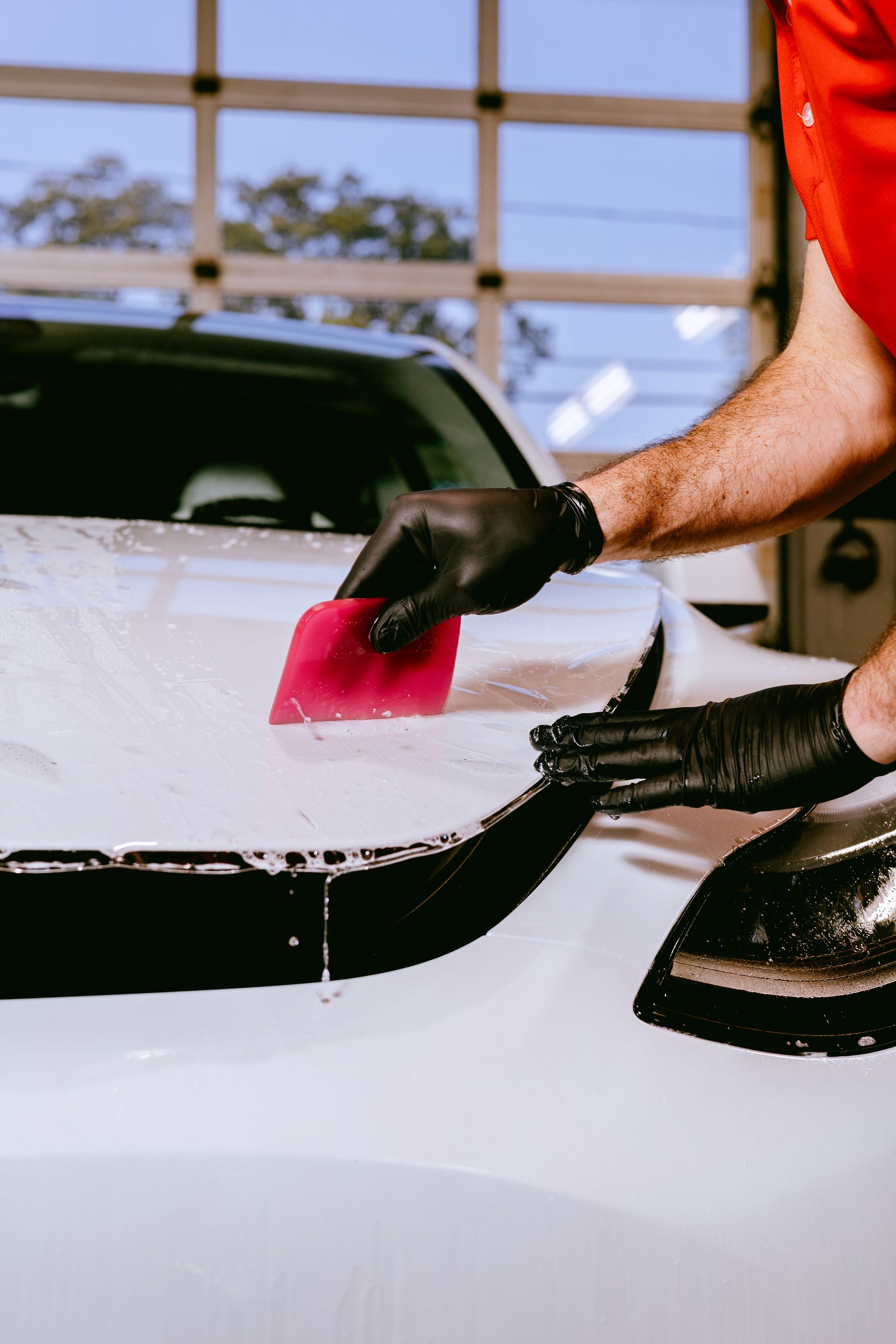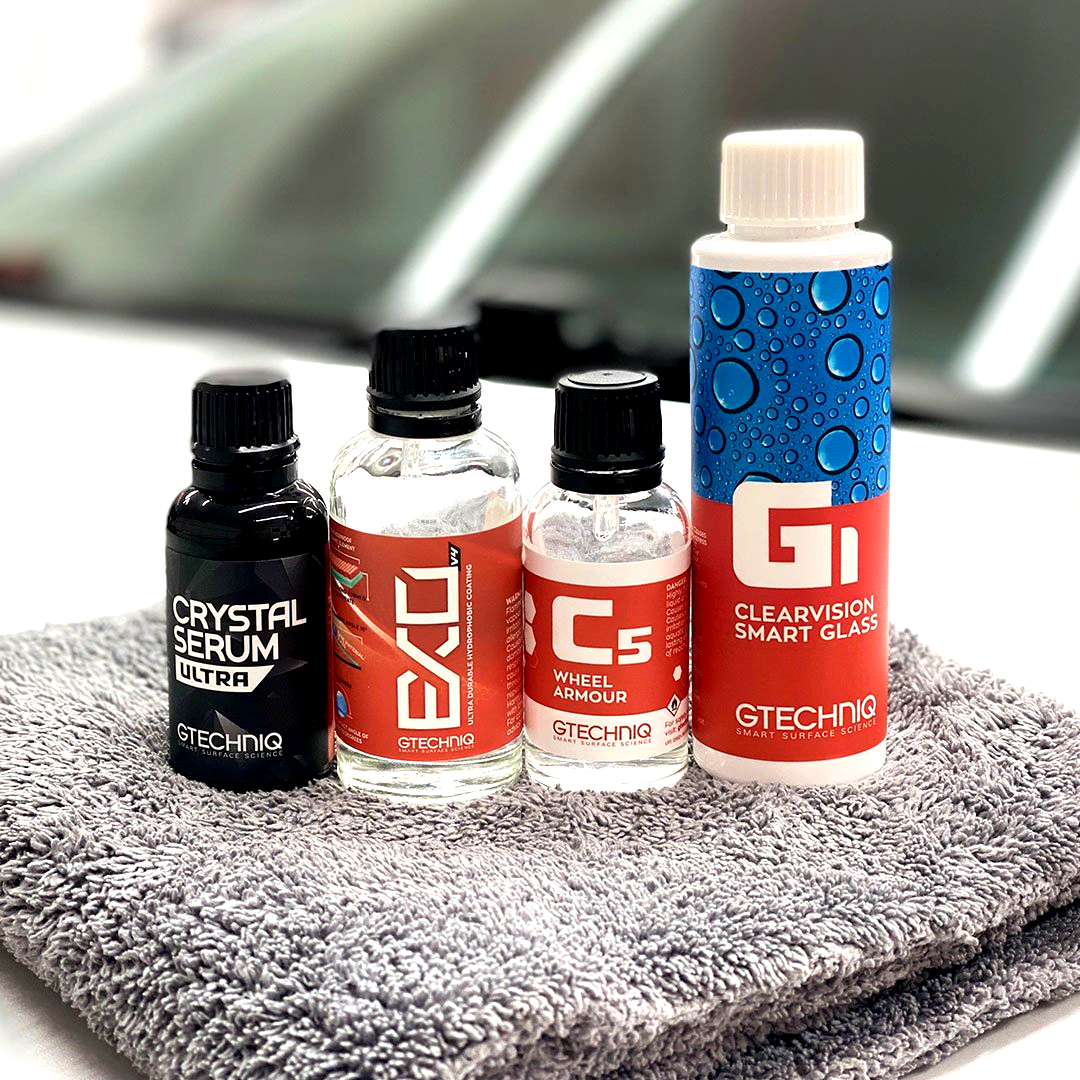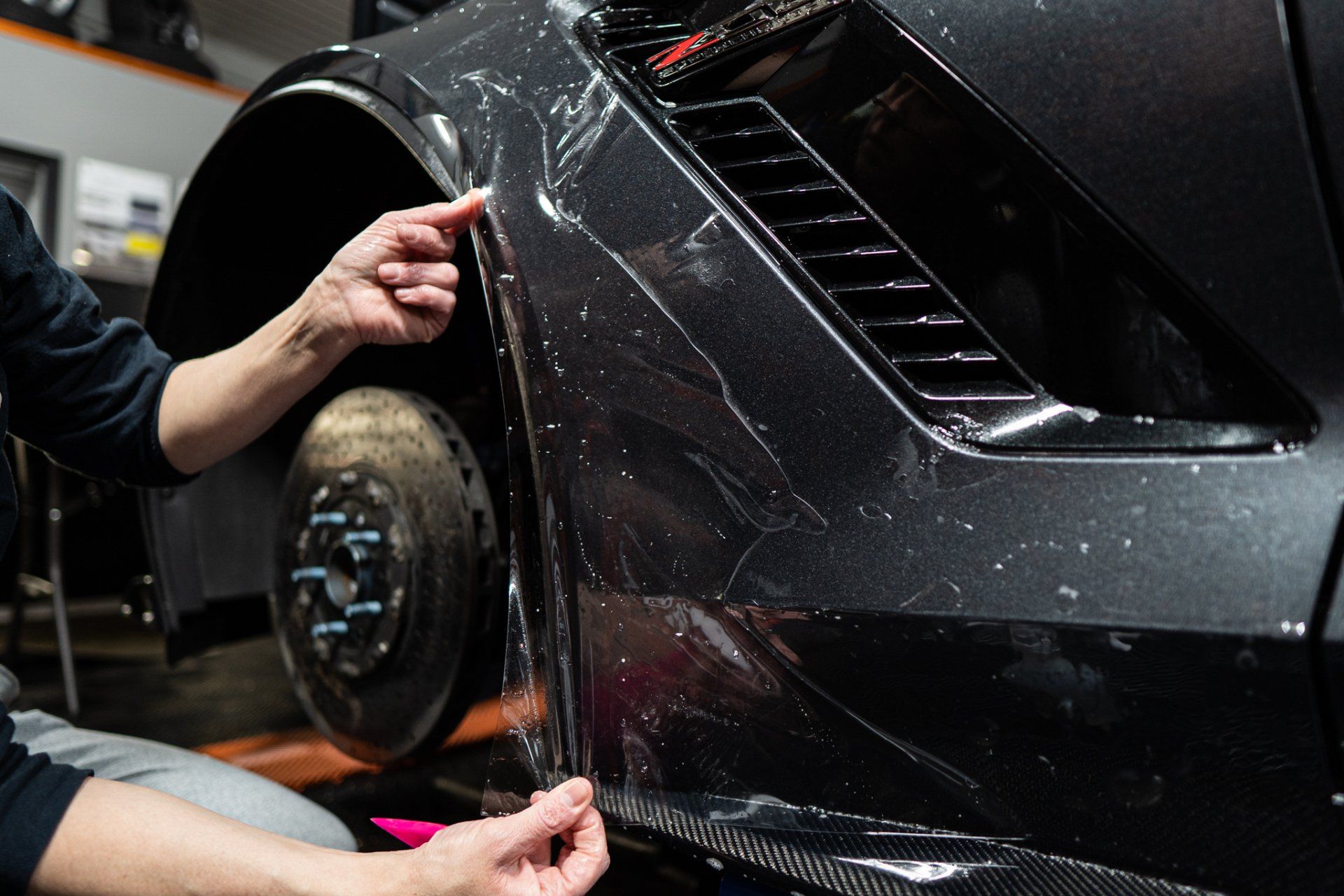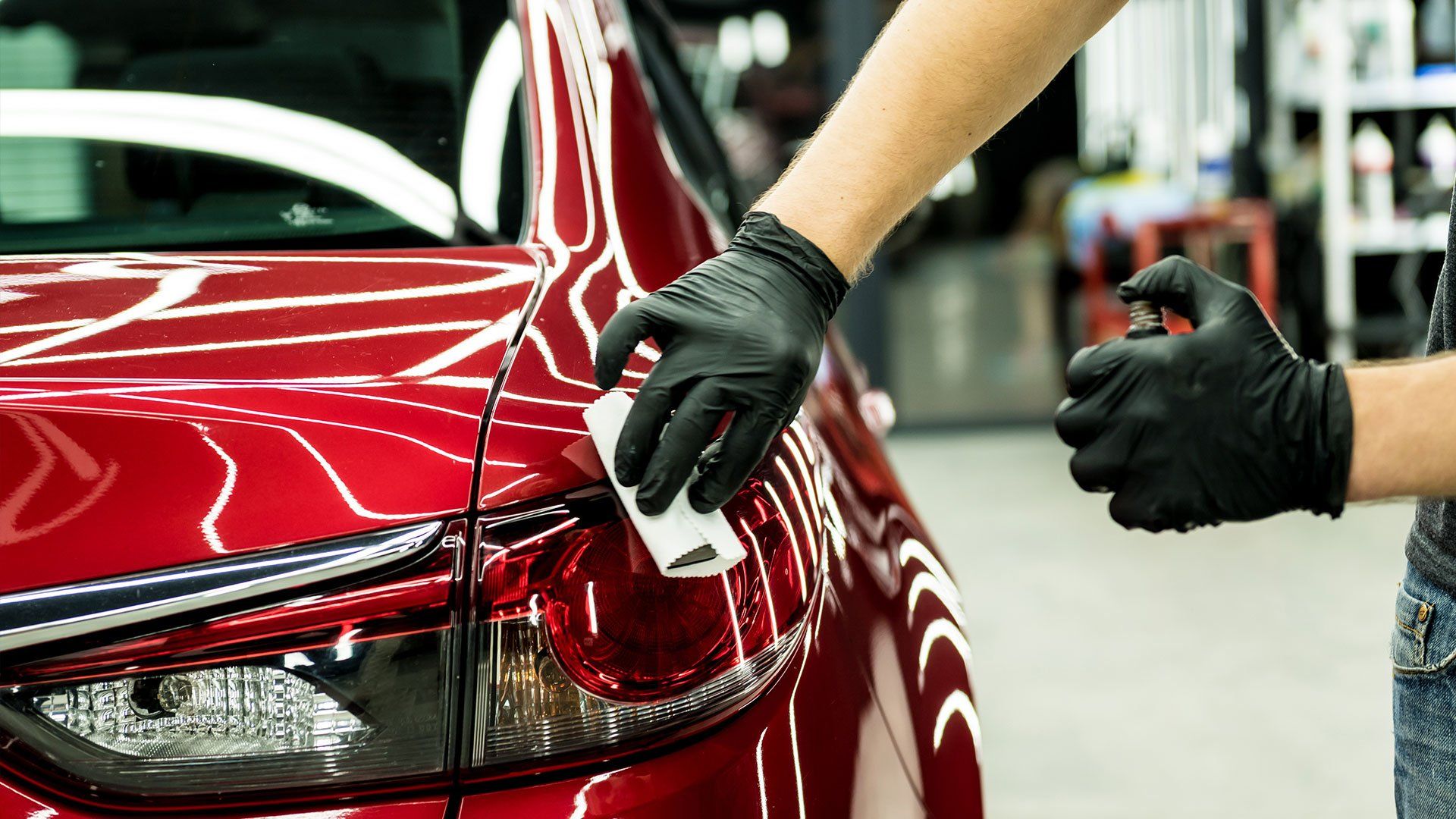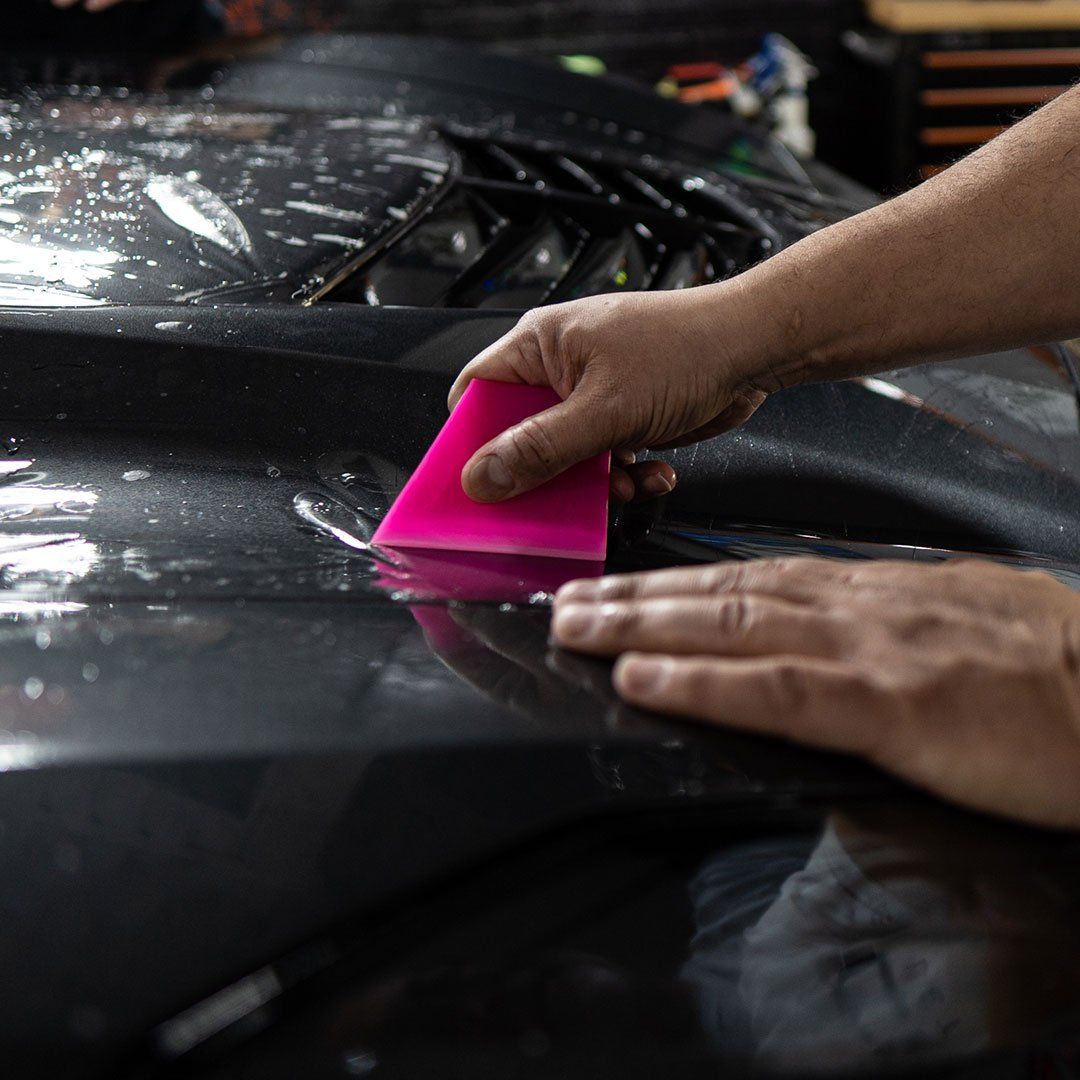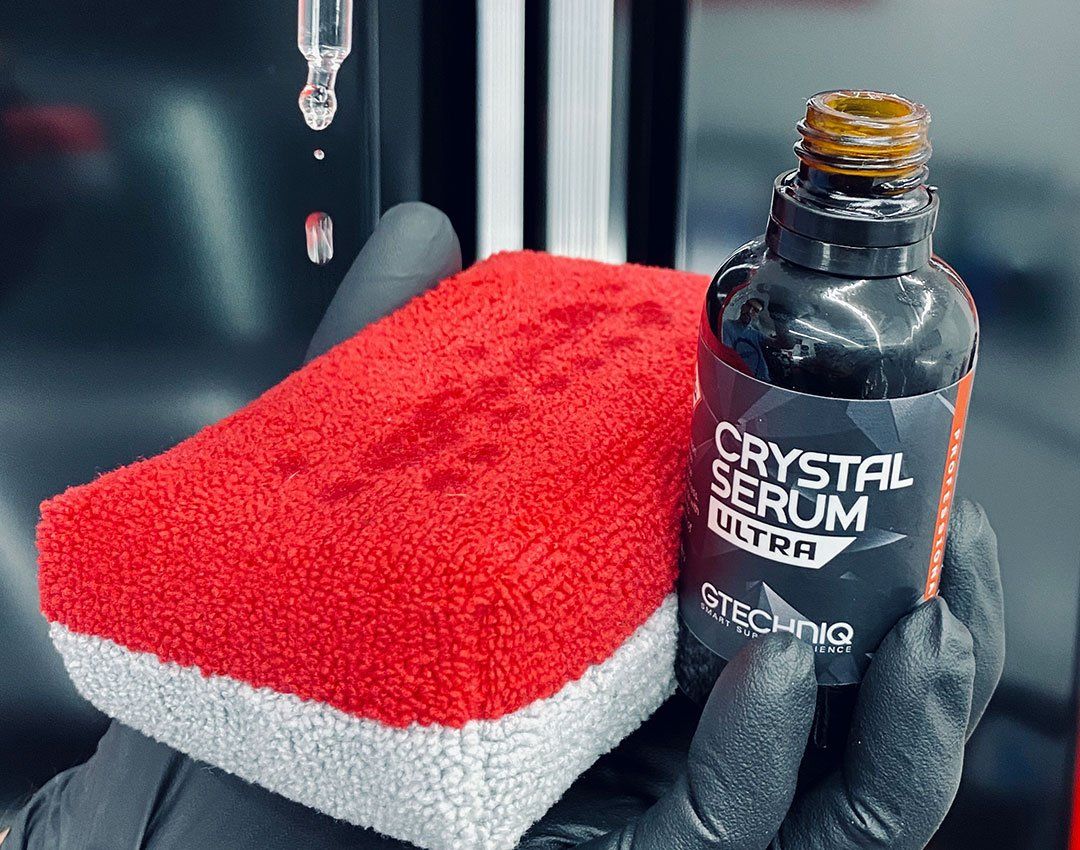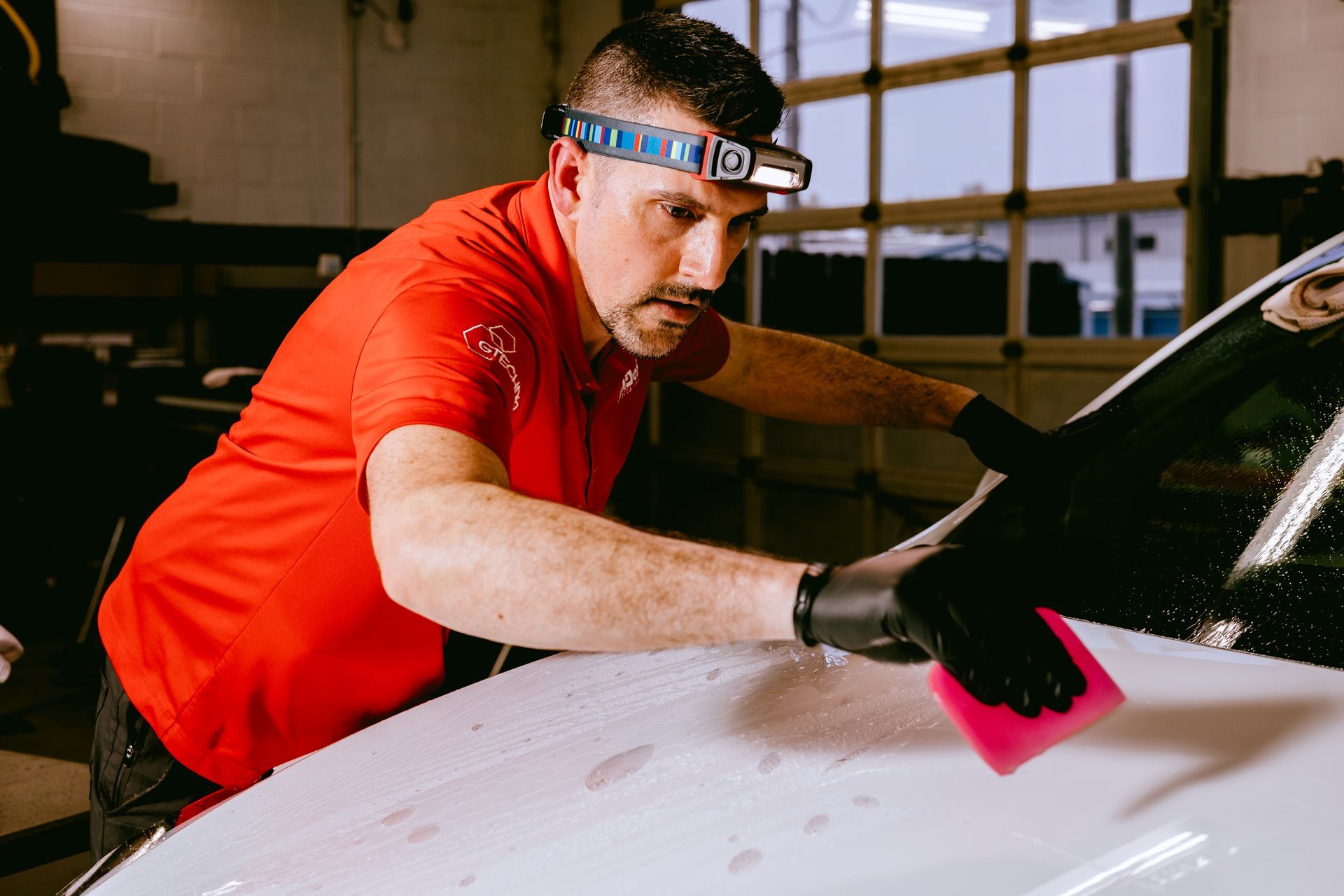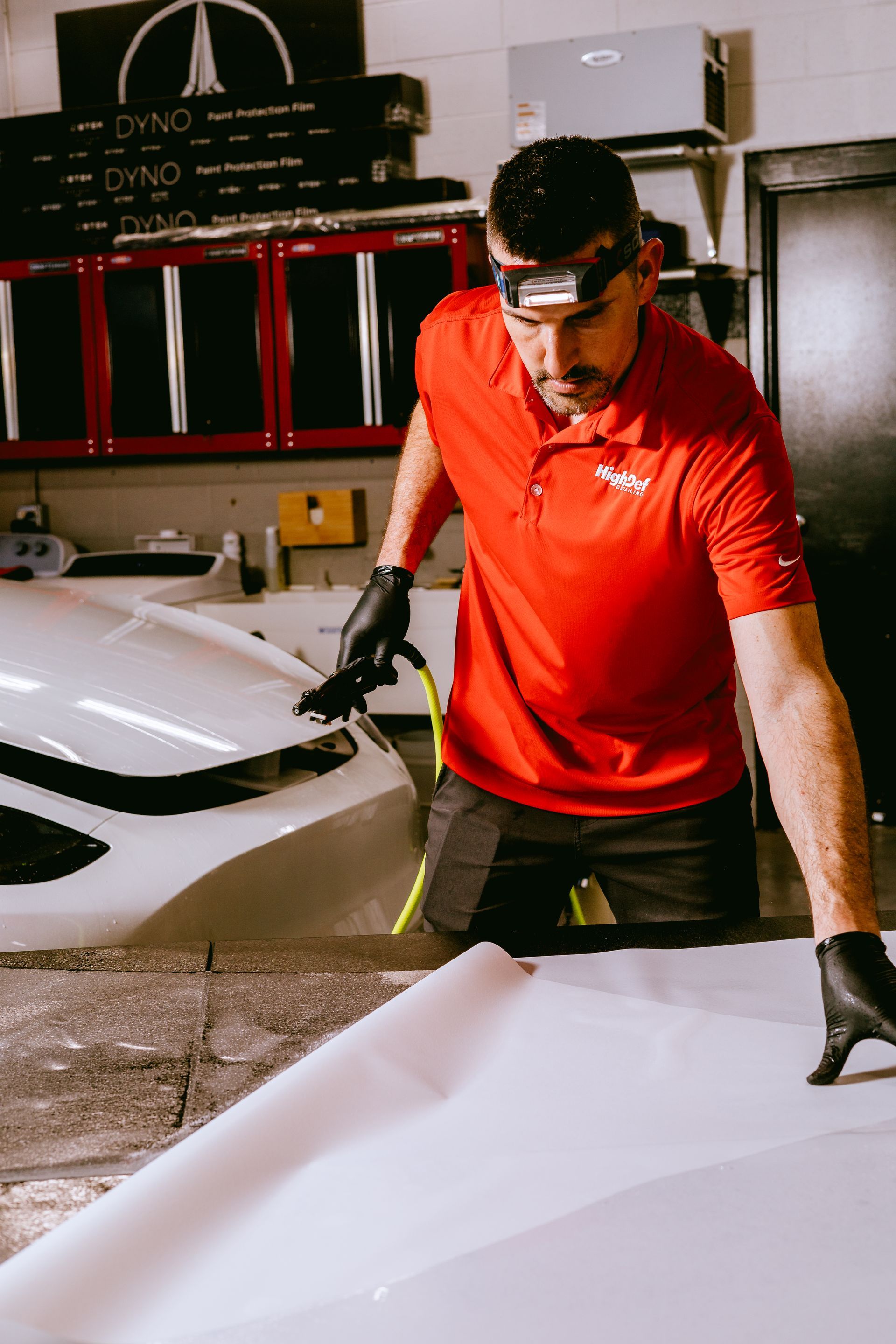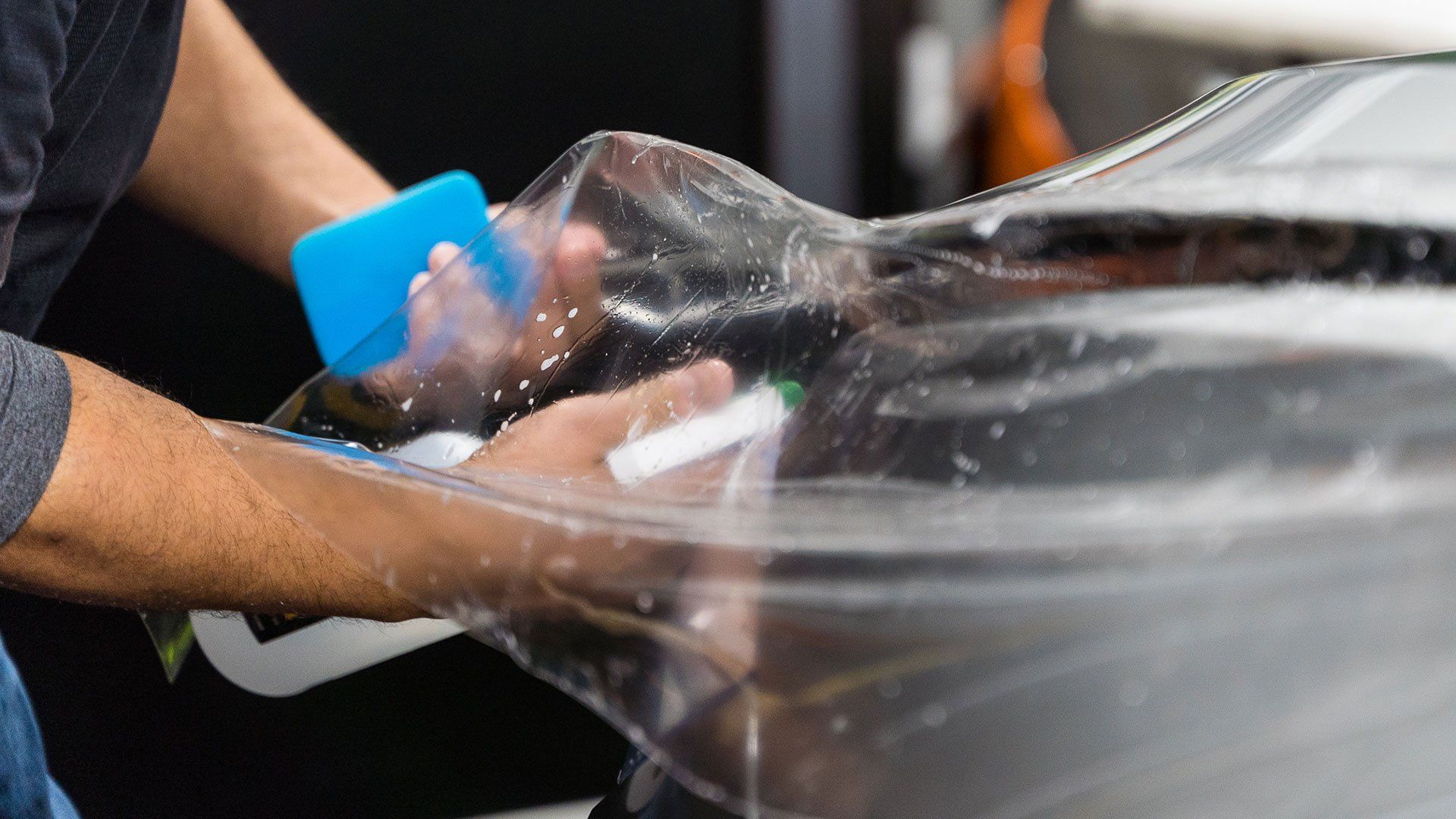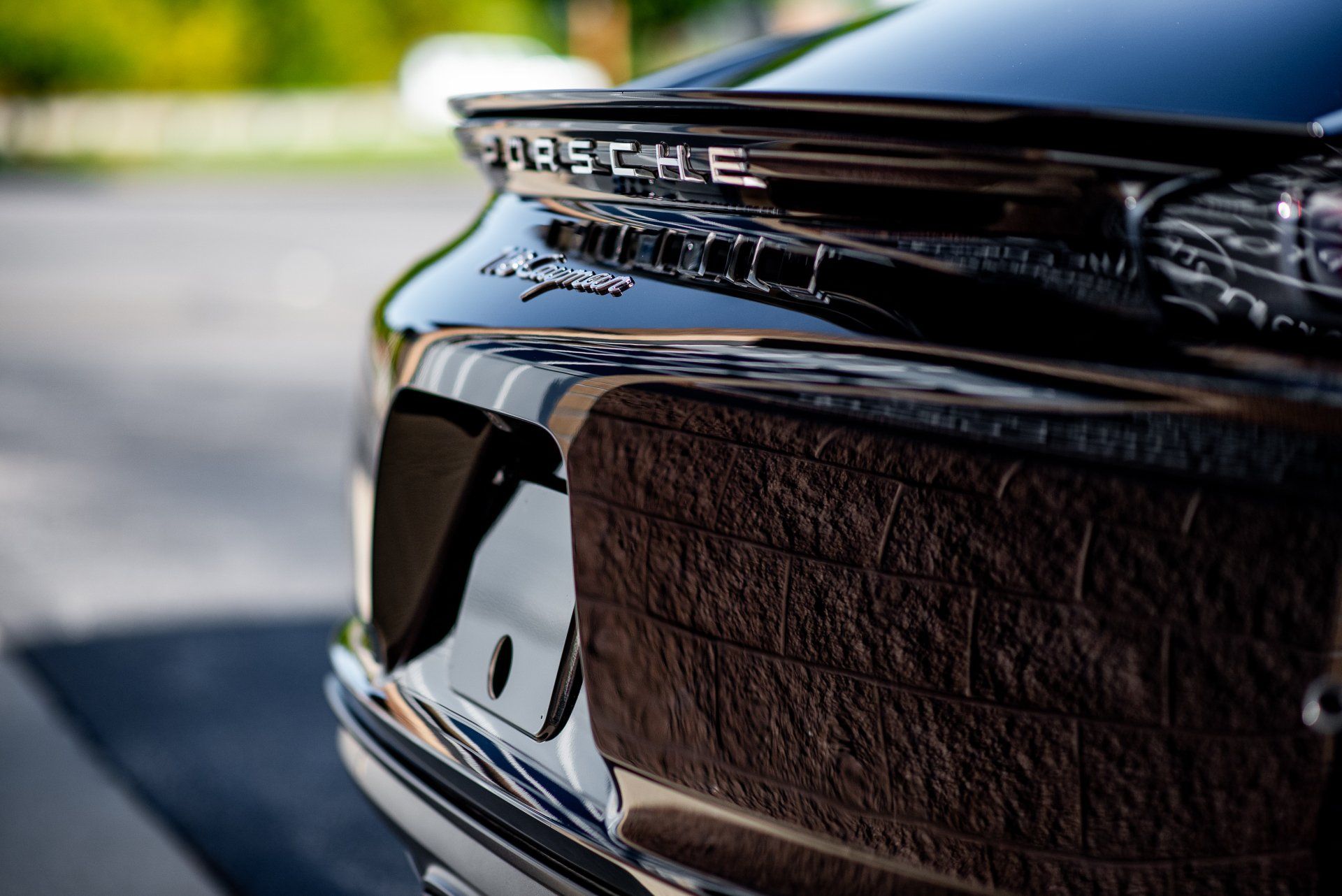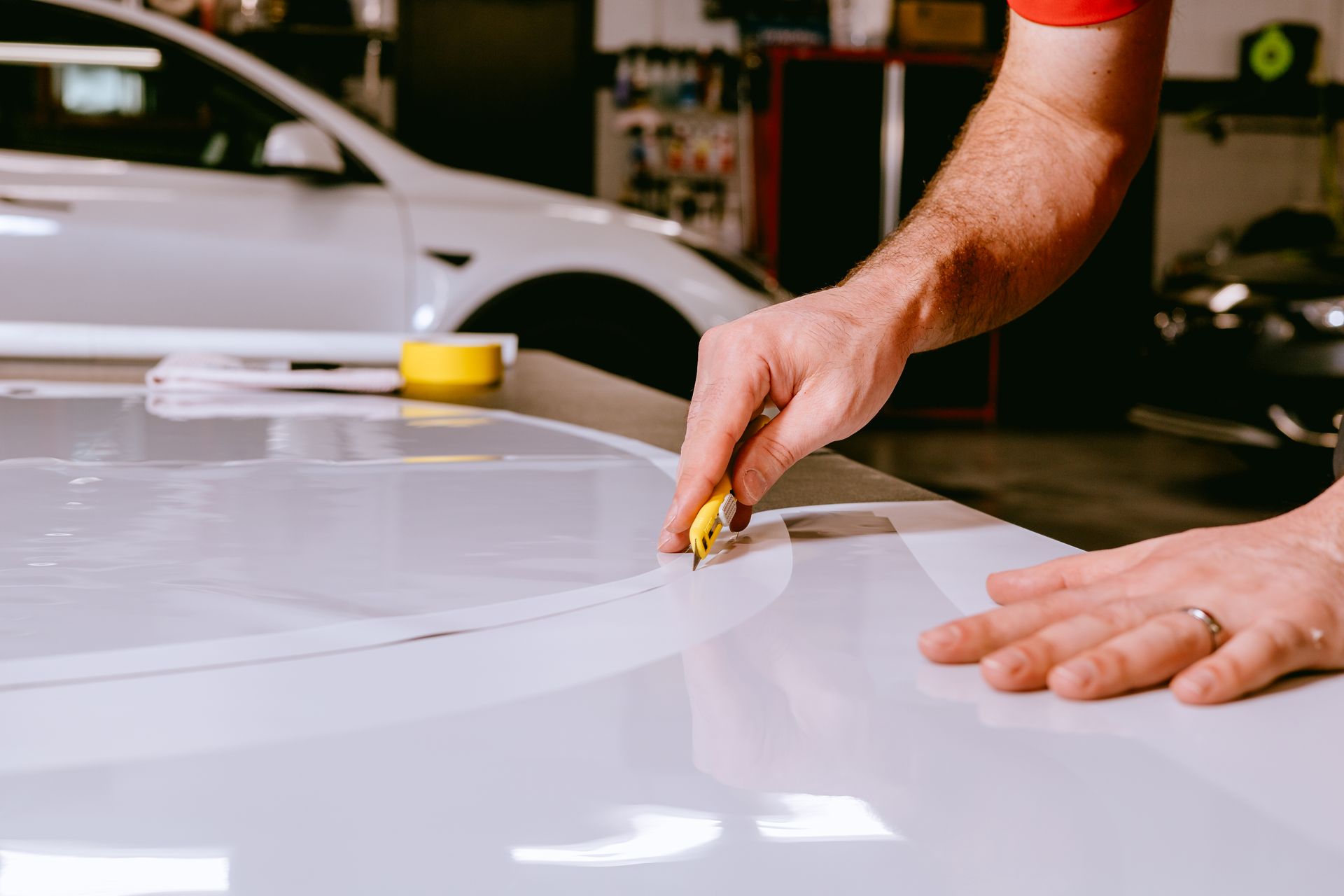PPF 101: A Complete Guide to Keeping Your Car Looking Brand New
Maintaining your car's paint protection film isn't just for aesthetics; it's an integral step in preserving the original factory paint. Just like guidelines set by the producer recommend, cleaning and other proper care practices must be regularly performed. But here's a twist, appearing fresh and glossy isn't only about the weekly wash; rather, it’s about adopting a complete care plan that extends beyond the observable surface of PPF. And trust us, this has a mandatory influence on something even more significant - conserving the resale value of your car.
To maintain your vehicle’s paint protection film and preserve the appearance of your car, regularly clean it with pH-neutral products, promptly remove bird droppings or bug splatter, and use gentle motions with a microfiber mitt and soap. Additionally, consider applying a ceramic coating for added protection against environmental elements.
Prioritizing Car Appearance Maintenance
Ensuring your car maintains its pristine appearance involves more than just the occasional wash and wax. It requires a deeper understanding of the protective measures in place to safeguard your vehicle's exterior, especially the paint protection film. Not only does a well-maintained PPF preserve the aesthetic appeal of your car, but it also serves as an indispensable shield for the factory paint beneath it.
Regular cleaning and maintenance play a vital role in extending the life and gloss of your paint protection film. By adhering to the manufacturer's guidelines for cleaning frequency and techniques, you can achieve that lasting shine that keeps your car looking brand new while simultaneously preserving its resale value. Cleanliness not only enhances visual appeal but also reinforces the protective capabilities of the PPF or clear bra. Imagine a well-maintained paint protection film as a transparent shield that continuously guards your car's surface from road debris, insects, UV radiation, and other potential assailants. Regular care serves as the polishing and reinforcing of this invisible barrier, ensuring it remains resilient and effective against environmental elements.
For instance, promptly removing bird droppings and bug splatter is essential to prevent them from etching into the PPF. These acidic substances can damage not only the film but also the underlying factory paint if left unattended. By incorporating this practice into routine maintenance, you safeguard both the paint protection film and the original paint finish from unsightly blemishes. Consider this: Just as you would clean and polish a treasured piece of jewelry to maintain its luster, regular attention to your car's clear bra preserves its clarity and sheen. This diligent care contributes significantly to maintaining your vehicle's overall visual appeal, which can be especially crucial if you decide to sell or trade it in for a new model down the road.
Adopting a Comprehensive Care Plan
Your car's paint protection film or clear bra is crucial for safeguarding its surface from road debris, bird droppings, UV rays, and other environmental elements. Embracing a comprehensive care plan guarantees the effectiveness and optical clarity of this protective film for years to come. Now, let's explore the essential steps necessary to protect and uphold the integrity of your PPF.
- Regular Inspections: Regularly checking for wear or damage is like giving your car a health check-up. Just as we visit the doctor for an annual check-up to catch any early signs of illness, inspecting your paint protection film lets you identify any issues early on before they become more serious problems. This preventative approach saves you time and money in the long run.
- Scheduled Cleanings: Imagine embarking on a long hiking trip without cleaning your boots along the way. As dirt and grime build up, it not only affects their appearance but also compromises their functionality. Similarly, by scheduling regular cleanings for your paint protection film, you ensure that it continues to serve its purpose effectively.
- Protective Measures: Applying a ceramic coating on top of the paint protection film acts as an added layer of protection against environmental contaminants and UV rays. It enhances the film's ability to repel dirt and moisture while providing increased durability. Similarly, using a high-quality car cover shields the PPF during extended periods of sun exposure or inclement weather.
By incorporating regular inspections, scheduled cleanings, and additional protective measures into your comprehensive care plan for your PPF, you ensure that your car's protective film remains robust and maintains its pristine condition over time.
Importance of Regular Washing for Paint Protection Film
Your car's paint protection film acts as your vehicle's shield against various external elements that can tamper with its appearance and condition. Over time, road debris, bird droppings, and pollutants from the environment accumulate on the film, impacting its ability to provide continued protection. That's where regular washing comes in. When you take your car out for a drive, it faces a barrage of environmental impurities. Dirt, dust, insects, and bird droppings—these things can make your car look unsightly but can also damage the PPF if left unattended. Regular washing ensures these contaminants are removed promptly, halting their destructive impact.
The Gentle Washing Routine
Now, when we talk about washing the car with PPF, we stress the importance of a gentle approach. Using pH-neutral soap and a soft microfiber mitt is crucial to prevent any damage to the paint protection film. These materials work together to effectively eliminate dirt without compromising the protective layer. It is crucial to remember that petroleum- or resin-based products should be avoided when cleaning the film. The reason behind using pH-neutral soap is that it doesn't interfere with the chemical balance of the protective film and gently eliminates impurities without causing harm. This routine of frequent but gentle cleaning not only maintains the integrity of the protective film but also ensures that your car looks splendid at all times.
Simply put, by tending to your paint protection film through regular washing, you're essentially extending its lifespan and preserving its clarity. An ongoing commitment to gentle cleaning means that your car's protective shield continues to do its job effectively while keeping your vehicle looking sleek and well-maintained.
Avoiding Abrasives: Ensuring Longevity of PPF
When considering the protective layer of your car, it's crucial to be mindful of potential abrasive elements. Think of your car as a polished gem that you want to keep sparkling. Using harsh cleaning tools or chemicals can cause unwanted scratches or compromise the integrity of the film. Therefore, employing gentle, non-abrasive cleaning tools such as microfiber mitts and towels is essential for maintaining the protective layer without causing damage, ensuring the glossy appearance of your car is preserved over time. Additionally, pH-neutral cleaners play a pivotal role in preserving the protective layer without causing any damage. By using cleaning agents with pH-neutral properties, you are ensuring that dirt and debris are effectively removed without compromising the integrity of the film. Using abrasive tools or harsh chemicals can erode the protective layers, compromising their ability to shield against external elements such as road debris, bird droppings, and UV rays.
To help put this into perspective, imagine cleaning your car with a rough scrubbing brush—not only would this fail to provide an effective clean, risking surface scratches, it could also have a detrimental effect on the paint protection film’s protective capabilities. Conversely, think about carefully washing your car with a soft cloth and light detergent. This approach ensures both cleanliness and preservation of the PPF's integrity. Opting for gentle microfiber mitts coupled with pH-neutral cleaners serves as a proactive measure to safeguard the protective film on your car, allowing it to maintain its full functionality over time. Recognizing how simple changes in cleaning techniques can make a significant impact on preserving the paint protection film’s longevity emphasizes why choosing the right tools and products is crucial for optimal maintenance.
Best Products for PPF Maintenance
Protecting your car requires good-quality products and proper maintenance. When it comes to maintaining your car's paint protection film, using the right products is crucial to keeping it in pristine condition. Let's explore some of the best products that you can use for PPF maintenance.
pH-Neutral Cleaners
One essential product for maintaining your clear bra is a pH-neutral cleaner. These cleaners are specially formulated to remove dirt without damaging the protective layer of your paint protection film. The gentle nature of pH-neutral cleaners ensures that they effectively cleanse the surface without compromising the integrity of the film. By using these cleaners, you can keep your PPF looking brand new while preserving its protective capabilities. The pH-neutral nature of these cleaners means that they are neither too acidic nor too alkaline, making them safe for use on delicate surfaces like PPF. They help to dissolve and lift dirt and contaminants from the film without causing any etching or damage. It's important to note that using harsh cleaners with high acidity or alkalinity can degrade the paint protection film over time, diminishing its ability to protect your car's paintwork from scratches and chips.
Microfiber Mitts
In addition to using pH-neutral cleaners, employing soft microfiber mitts during washing is highly recommended for gentle PPF maintenance. Microfiber mitts are designed to minimize the risk of scratching the paint protection film during cleaning, providing a gentle yet effective way to keep your clear bra clean and free from blemishes. When paired with freshwater and mild soap, microfiber mitts ensure that you can wash your car without compromising the integrity and appearance of the PPF. Regularly washing your car with microfiber mitts not only removes dirt and debris but also prevents any buildup that could potentially mar the finish of the protective film. The soft, non-abrasive properties of microfiber make it an ideal material for cleaning sensitive surfaces like a paint protection film, ensuring that your car retains its glossy, flawless appearance.
When it comes to maintaining your car's paint protection film, these products are indispensable for preserving the longevity and aesthetic appeal of this protective layer. Incorporating pH-neutral cleaners and microfiber mitts into your PPF maintenance routine can effectively safeguard your car against environmental contaminants while ensuring that the protective film remains in optimal condition.
PPF Application for Maximum Car Protection
A paint protection film acts as a superhero shield, safeguarding your car from scratches on rough terrain and harsh sun rays. When you apply PPF to your vehicle, you create a barrier between the external elements and your car's paint, preserving it and maintaining its value for longer. It's akin to a layer of armor that keeps your car looking brand new. Now, installing a paint protection film on your car isn't something you want to attempt at home - it's best left to the professionals. The installation process involves meticulous measurements and precision cutting to ensure the film fits seamlessly on every inch of your car's surface. This requires expertise and specialized tools to avoid wrinkles or air bubbles, ensuring a smooth and flawless finish.
Imagine trying to wrap a complex shape like a door handle or bumper with a thin, adhesive film—it takes skill and experience to do it seamlessly without leaving any visible seams or imperfections. Once installed, the paint protection film blends in with the color and contours of your car, almost becoming invisible. This ensures that your car maintains its sleek appearance while benefiting from enhanced protection. Investing in professional PPF installation services not only guarantees a flawless application but also provides peace of mind, knowing that your vehicle is receiving optimal protection against road debris, environmental contaminants, and UV exposure.
Unrivaled Paint Protection Film Service in Elkhart, IN
Safeguard your investment with High-Def Detailing's unrivaled paint protection film services in Elkhart, IN. Our team of skilled professionals uses state-of-the-art products and meticulous installation techniques to shield your vehicle's exterior from the elements, preserving its pristine condition for years to come. Experience the peace of mind that comes with our exceptional workmanship and commitment to customer satisfaction. Discover how our comprehensive paint protection film solutions can transform your driving experience by shielding your car, truck, or SUV from the ravages of daily wear and tear. Trust High-Def Detailing to provide the ultimate in paint protection for your prized possession. Call us today at
(574) 333-9976 to get started!
